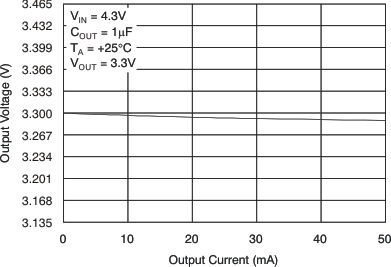SLVS332J March 2001 – December 2016
PRODUCTION DATA.
6 Specifications
6.1 Absolute Maximum Ratings
over operating free-air temperature range (unless otherwise noted) (1)| MIN | MAX | UNIT | ||
|---|---|---|---|---|
| Voltage | Input voltage(2) | –0.3 | 6 | V |
| Maximum dc output voltage | 4.9 | V | ||
| Current | Peak output current | Internally limited | A | |
| Temperature | Operating virtual junction temperature, TJ | –40 | 85 | °C |
| Storage temperature, Tstg | –65 | 150 | °C | |
(1) Stresses beyond those listed under Absolute Maximum Ratings may cause permanent damage to the device. These are stress ratings only, which do not imply functional operation of the device at these or any other conditions beyond those indicated under Recommended Operating Conditions. Exposure to absolute-maximum-rated conditions for extended periods may affect device reliability.
(2) All voltage values are with respect to network ground pin.
6.2 ESD Ratings
| VALUE | UNIT | |||
|---|---|---|---|---|
| V(ESD) | Electrostatic discharge | Human-body model (HBM), per ANSI/ESDA/JEDEC JS-001(1) | ±2000 | V |
| Charged-device model (CDM), per JEDEC specification JESD22-C101(2) | ±500 | |||
(1) JEDEC document JEP155 states that 500-V HBM allows safe manufacturing with a standard ESD control process.
(2) JEDEC document JEP157 states that 250-V CDM allows safe manufacturing with a standard ESD control process.
6.3 Recommended Operating Conditions
over operating free-air temperature range (unless otherwise noted)| MIN | NOM | MAX | UNIT | ||
|---|---|---|---|---|---|
| VI | Input voltage | 1.8 | 5.5 | V | |
| VO | Output voltage | 1.8 | 3.3 | V | |
| IO | Output current | 0 | 50 | mA | |
| CI | Input capacitor | 0 | 0.1 | µF | |
| CO | Output capacitor | 0.47 | 1 | µF | |
| TJ | Junction temperature | –40 | 85 | °C | |
6.4 Thermal Information
| THERMAL METRIC(1) | TPS797xx | UNIT | |
|---|---|---|---|
| DCK (SC70) | |||
| 5 PINS | |||
| RθJA | Junction-to-ambient thermal resistance | 230.9 | °C/W |
| RθJC(top) | Junction-to-case (top) thermal resistance | 98.3 | °C/W |
| RθJB | Junction-to-board thermal resistance | 70.7 | °C/W |
| ψJT | Junction-to-top characterization parameter | 3.9 | °C/W |
| ψJB | Junction-to-board characterization parameter | 70.1 | °C/W |
| RθJC(bot) | Junction-to-case (bottom) thermal resistance | — | °C/W |
(1) For more information about traditional and new thermal metrics, see Semiconductor and IC Package Thermal Metrics (SPRA953).
6.5 Electrical Characteristics
over operating temperature range TJ = –40°C to 85°C, typical values are at TA = 25°C, VI = VO (typ) + 0.5 V or 2 V (whichever is greater); IO = 0.5 mA, VSET, VEN = VI, and CO = 1 µF (unless otherwise noted)| PARAMETER | TEST CONDITIONS | MIN | TYP | MAX | UNIT | ||
|---|---|---|---|---|---|---|---|
| VI | Input voltage(1) | IO = 3 mA | 1.8 | 5.5 | V | ||
| IO = 10 mA | 2 | 5.5 | |||||
| IO | Continuous output current(2) | 0 | 50 | mA | |||
| VO | Output voltage accuracy(3) | VO + 1 V ≤ VI ≤ 5.5 V 1 mA < IO < 10 mA |
–4% | 4% | |||
| ΔVO(ΔVI) | Line regulation(3) | VO + 1 V ≤ VI ≤ 5.5 V | 0.15% | V | |||
| ΔVO(ΔIO) | Load regulation | 1 µA < IO < 10 mA | 5% | A | |||
| V(DO) | Dropout voltage(4), IO = 10 mA VI = VO(NOM) – 0.1 V |
TPS79730 | 110 | 200 | mV | ||
| TPS79733 | 105 | 200 | |||||
| ISC | Output current limit | VO = 0 V | 190 | 300 | mA | ||
| I(GND) | Ground pin current(3) | IO = 10 mA | 1.2 | 2 | µA | ||
| PSRR | Power-supply rejection ratio (ripple rejection) |
f = 100 Hz, CO = 10 µF, IO = 10 mA |
50 | dB | |||
| Vn | Output noise voltage (TPS79718) | BW = 200 kHz to 100 kHz, CO = 10 µF, IO = 10 mA |
600 | µVRMS | |||
| VImin(PG) | Minimum input voltage for valid PG | V(PG) ≥ 0.8 V, IPG = 100 µA | 1.2 | V | |||
| VIT | PG trip threshold voltage | VOUT increasing | 90% | VOUT | |||
| VOL(PG) | PG output low voltage | VI = 1.4 V, IPG = 30 µA, IO = 1 mA | 0.14 | 0.225 | V | ||
| Ilkg(PG) | PG leakage current | V(PG) = 5 V, VI = VO + 1 V, IO = 1 mA |
0.1 | nA | |||
(1) Minimum VI = VO + V(DO) or the minimum value specified here, whichever is greater.
(2) Continuous output current is limited by internal protection circuitry, but it is not recommended that the device operate above this maximum for extended periods of time.
(3) Minimum VI is specified in (1).
(4) V(DO) is not measured for the TPS79718 because minimum VI > 1.7 V.
 Figure 1. TPS797xx PG Timing Diagram
Figure 1. TPS797xx PG Timing Diagram
6.6 Typical Characteristics
over operating temperature range TJ = –40°C to 85°C, typical values are at TA = 25°C, VI = VO (typical) + 0.5 V or 2 V (whichever is greater); IO = 0.5 mA, VEN = VI, and CO = 1 µF (unless otherwise noted).







